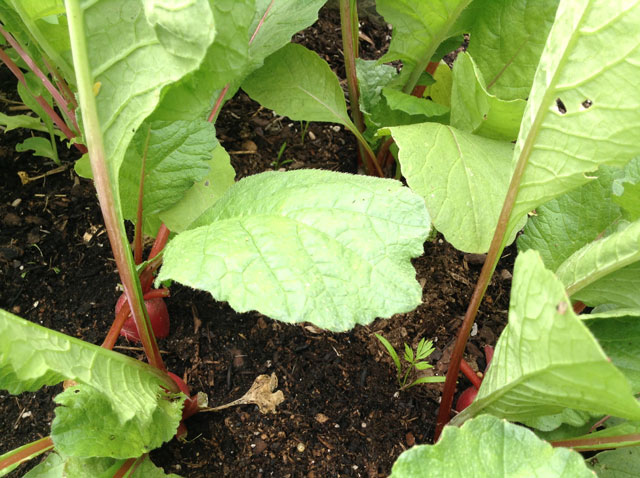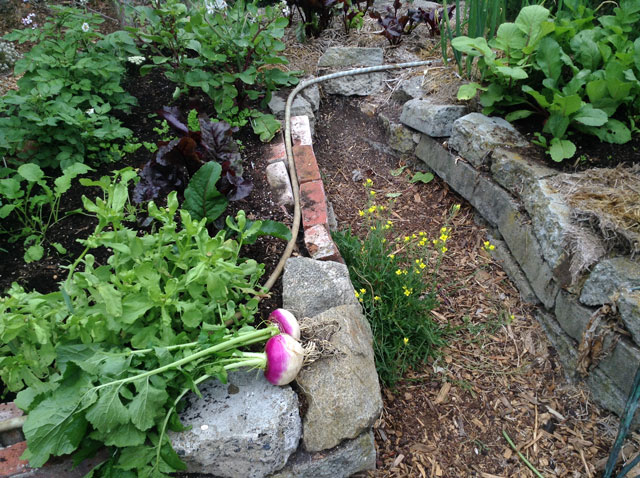Even the smallest space can offer bounty! It just takes a little planning and forethought about the placement and choices of crops.
In this video below I explain how to use succession to plant vegetables close together knowing their days to maturity. For example when planting a long days to maturity crop such as broccoli a shorter crop such as radishes are planted right next to it. The intention is that the radishes will be eaten and long gone by the time the broccoli has grown large and covered the space.
In a nutshell, rows will be interspersed with long season next to a short season crop and then another longer season crop. Sowing lettuce next to carrots followed by radishes gives the lettuce and radish the room to grow, and adds a bit of cover for tender carrot seedlings as they get some size. Lettuce can be sown thickly and harvesting as baby greens can begin a few weeks after planting as lettuce matures after 30-45 days.
The same strategy can be used for the radishes, depending on the variety, as radishes can be thinned and harvested while small and tender and continuously until a larger size. French radishes can begin to be harvested at 2 weeks! If growing Asian daikon style radish (as mentioned in the video) it can take 50-60 days for full size and some large radish varieties can take 120 days. So keep that in mind when calculating succession growth as carrots take about 100-120 days to maturity.

Maximize the growing space as plants are growing. Don’t plant 3 adjacent rows of long season vegetables at the same time. There will be so much crowding that some of the plants will fail to thrive from lack of light and root room. And there will be more issues with mildew, aphids and other pests by crowding. Stagger planting times so that Broccoli is finishing as a new row is just beginning to replace. Plant frequently – eat frequently!
When using succession planting, it is important to add lots of compost and/or use liquid fertilizers (such as fish emulsion) to keep nutrients available at all times. Side dressing with compost during the season really works as does adding compost every time new plants are added. I like to start most seeds in six pack and transplant in as there is more control on the spacing over sowing in place.
Also, ROTATE THE CROPS! There will be less issues with pests if vegetables like onions and beets are not continuously grown in any one area. For example, onions are susceptible to onion root maggots that live in the soil. Planting onions in the same spot would give such a pest an a huge advantage. Leaf miners are another pest that love beets and Swiss chard. The life cycle is dependent on the ability of the destructive tunneling maggots to drop off the plant into the soil and then hatch into little flies that then lay eggs on the leaves. Good to know!

